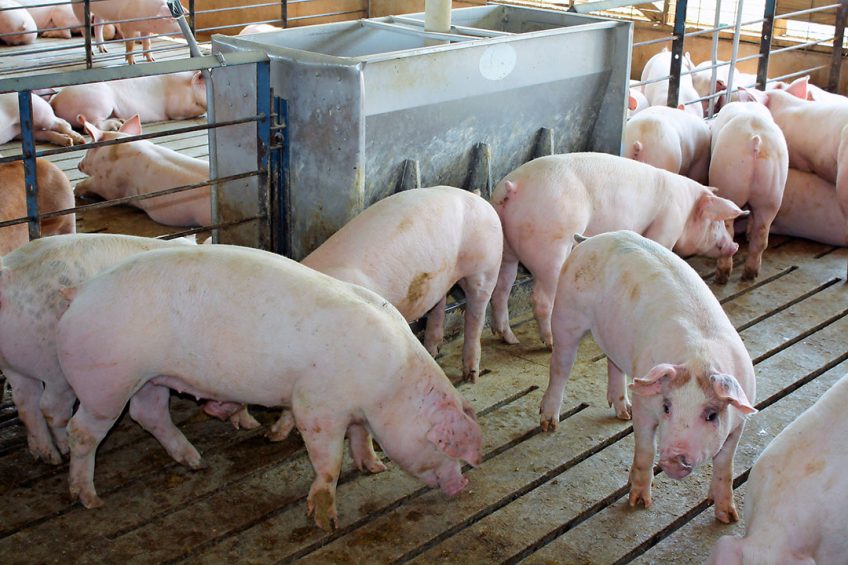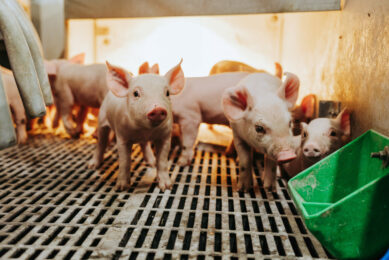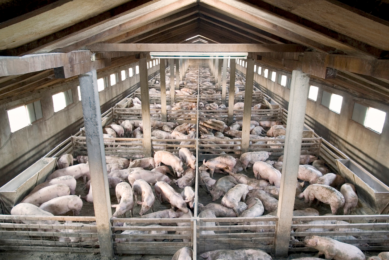Covid-19: US pig backlog may rise to 10 million

As US packing plants continue to operate under president Trump’s decree, the total backlog of hogs with no place to go from April to mid-September 2020 may reach 10 million. However, Iowa – the nation’s top hog-producing state – has managed so far to avoid large-scale euthanasia.
In the US, coronavirus 2019 (Covid-19) has caused an extensive reduction in pork packing plant capacity through worker infections, temporary closures and biosecurity measures such as wider spacing between workers. This in turn has caused widespread processing backlogs, with tens of thousands of pigs being euthanised every day in some states.
NPPC: 10 million hogs with no place to go
The National Pork Producers Council (NPPC) estimated that in total, from late April to mid-September this year, up to 10 million hogs may need to be euthanised.
Keeping these pigs on farms is not an option as there is no foreseeable processing capacity to handle them and there are also significant associated animal welfare issues. These issues relate to crowding as these pigs continue to get larger, and also to the methods being used by some producers to slow the pigs’ growth rate (for example, by increasing barn temperature).
However, on Tuesday, the The Guardian quoted NPPC representative Jim Monroe claiming that the US pig slaughter capacity situation was improving. As of the end of last week, he said, it had returned to over three-quarters of normal.
Collaboration for pig euthanasia
On May 15th, the US Department of Justice provided a ‘favourable decision’ for the NPPC relating to the ‘unprecedented challenges’ of the Covid-19 pandemic. The NPPC had sought “permission to allow hog farmers greater flexibility in working to maximise the number of hogs entering the food supply, minimise the tragic need to euthanise hogs, and facilitate safe and orderly euthanisation.”
The NPPC is assisting its state organisations, state governments and farmers “in identifying sources of euthanasia equipment, and is participating in discussions regarding the organisation of centralised euthanasia and disposal stations.”

Read more about pigs and Covid-19 at our special overview page
Avoiding hog euthanasia in Iowa
In Iowa however, where more pigs are produced than in any other US state, the number of hogs that has so far had to be euthanised and disposed of is low. At the end of last week, it was cumulatively fewer than 5,000, according to Mike Naig, Iowa secretary of agriculture.
That is despite the fact that in April, at least 5 large meat packing plants in the state closed temporarily to stem the tide of Covid-19 infections. For example, Tyson Food temporarily closed its Waterloo pork plant for over 2 weeks in April, where about 19,500 hogs are processed each day, about 1/20 of total US pork production.
Reasons for Iowa’s avoidance of pig euthanasia
There’s various reasons why Iowa may have avoided large-scale euthanasia of pigs so far. President Trump’s decree on April 28th forcing US meat packing plants to stay open has certainly played a large role in keeping processing capacity high in Iowa and across the US. Pork packing plants have also put many measures in place to prevent further worker infections. After temporary closures, perhaps Iowa plants were able to quickly catch up.
It is also known that some euthanasia of pigs in Iowa has been avoided through a charitable programme called Pass the Pork that started May 1st.

How is the Covid-19 situation in Europe’s pork industry? Read the overview
The programme invites farmers to donate hogs to small local slaughterhouses (which then donate the meat to local food banks) rather than having them euthanised. Donations are being sought to cover shipping for these pigs, and government-related fees for participating slaughterhouses have been reduced. One ‘Pass the Pork’ processor participant (in Eagle Grove, IA) has so far processed over 8,000 pounds (3,600 kg) of ground pork.
More Covid-19 assistance
On Tuesday May 19th, the United States Department of Agriculture (USDA) announced details of the Coronavirus Food Assistance Program, which will provide up to $ 16 billion in direct payments for farmers/ranchers impacted by the pandemic.
In addition, USDA’s ‘Farmers to Families Food Box’ programme is partnering with regional and local distributors, whose workforces have been significantly impacted by the closure or reduced capacity of restaurants and food service, to purchase $ 3 billion in fresh meat, dairy and produce and deliver boxes to Americans in need.
Outlook for pork exports
On Monday May 18th, the USDA ‘Economic Research Service’ (USDA-ERS) published its monthly review and outlook for livestock, dairy and poultry. Reduced packing plant throughput due to Covid-19 has resulted, says the agency, in April’s pork production being less than that of April 2019 by at least 11%. However, the export outlook is positive.

More on the US pork export situation in times of Covid-19 in last week’s overview
USDA-ERS states that whilst the pandemic and other factors will temper US pork exports this year, they are still expected to be “13% above 2019.” Exports in 2021 are expected to exceed that by 2%.
Canada: pork plant inspectors fall ill
The Canadian pork industry has experienced the same challenges as the US one, with some backlog of pigs and euthanasia. Due to good outbreak control (and not due to government decree, as has occurred in the US), packing plants have remained open for the past few weeks after some temporary closures.
However, the number of packing plant inspectors with Covid-19 has reached 40.











